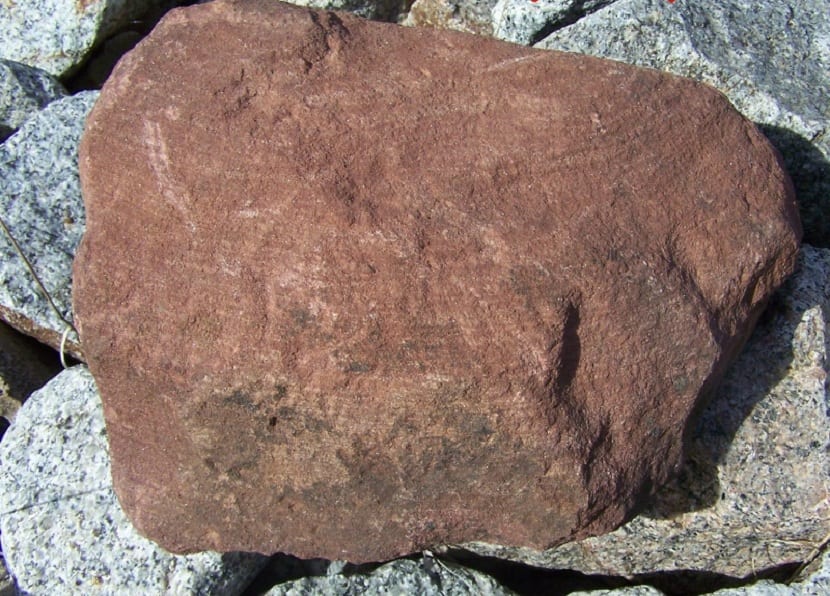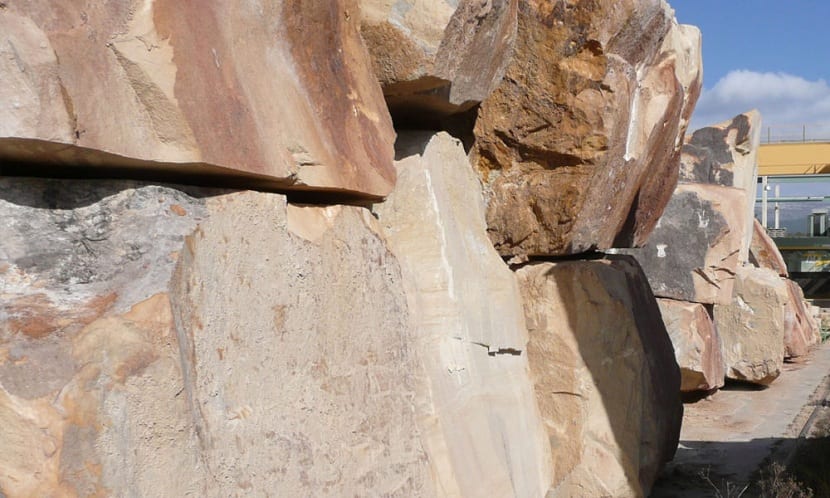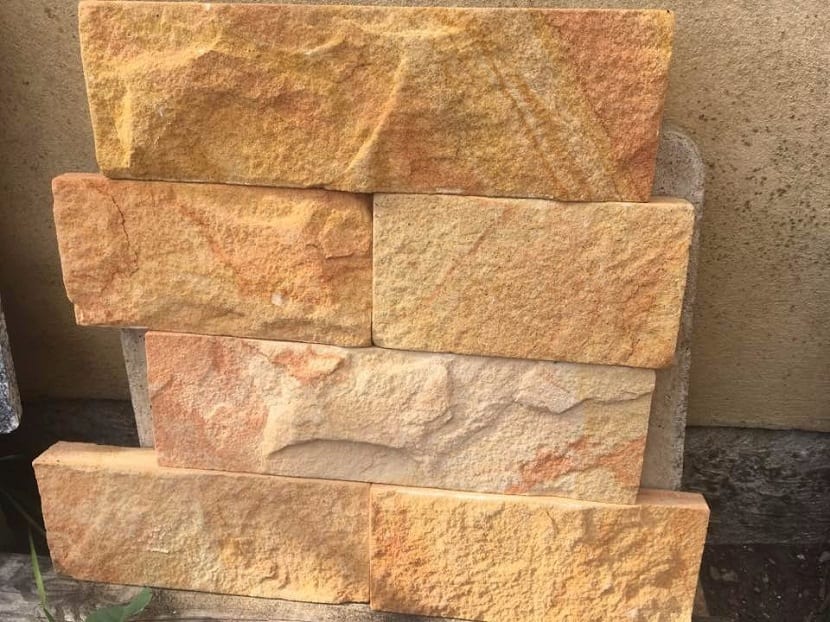
Today we come with a geology article that you need to know since we are going to talk about a rock type sedimentary widely used and frequent throughout the world. It's about the sandstone. It is a rock composed of fragments of quartz, feldspars and mica, among other rocks and minerals the size of sand. That's where the name comes from. This rock is widely used in cementing and is very common in different types of soil.
We are going to show you what are the characteristics of sandstone and the main uses.
Key features

The mineral particles that accumulate in this rock throughout the process of its formation are called clasts. For this sedimentary rock to form, these minerals are compacted and accumulated by the effect of air or water pressure. Once they make contact, They are becoming increasingly compact due to the effect of the pressure exerted by the deposits on these minerals.
Some materials such as silica, calcium, carbonate or clay are involved in the cementation of this rock. We can find some empty spaces when we take a sandstone in which the cement does not enter. These spaces give the sandstone a porous appearance. The pores allow the flow of water and other liquids through it.
This rock has a color that varies from the material that has acted as cement.. We can find sandstones with the color red, reddish brown, etc. These are the ones that accumulate iron oxides in their formation. On the other hand, we can find white, yellow or gray sandstones that have been compacted by silica or carbonate.
Being one of the most common and abundant rocks on earth, it is normal that we should know about it. It makes up 20% of all sedimentary rocks that exist on the planet.
Sandstone classification

Sandstone is a type of clastic rock with variable grain size. We found her with fine grain (0,2mm), medium grain (0,63 cm) and coarse grain (2 mm). It is known as sandstone because it shares many of its characteristics with sand.
We can see a classification of sandstone according to the amount and concentration of the rocks and minerals that compose it. Mostly, they are classified into these five large groups:
- Quartzsandites. They are formed by quartz as the main component of the rock. From the quartz, the rest of minerals and rocks have been annexed.
- Calcarenites. Calcium carbonate predominates in them. It is the main component.
- Arcoses. Feldspar is the most abundant element in this case.
- Lithoarenites. It is the one that, for the most part, is composed of fragments of rocks. Of the lithoarenites we can see other names depending on the origin of the rock that is forming it and the amount in which it is found. Sedarenites (sedimentary rocks), Volcarenites (volcanic) and Filarenites (metamorphic).
- Greywackes. This classification is named for the percentage of volume in the matrix. It is usually between 5% and 15%.
Sandstone deposits

You are probably wondering where to find a high concentration of sandstone. These deposits are not very difficult to find. Sandstone being one of the sedimentary rocks with the most presence in the world, we can find it in countless places. They can develop in young mountain ranges as a product of faster erosion and even in terrain that takes years to form.
In the dynamics of this rock we find that has the ability to rise to the ground and decompose into sand. Later, it deposits in beds and becomes sandstone again. This cycle of creation destruction repeats itself over millions of years.
It is common to see large amounts of sandstone on the surface of seas, lakes and rivers. With the dragging of sediments and different particles, plus the pressure exerted by the water, it can lead to the formation of this rock. Although in sandstone it is not directly associated with oil and natural gas, there are people who associate it. This is because, despite the fact that these hydrocarbons are not formed in them, they are capable of sneaking through the water-saturated grains to float up. Therefore, oil companies use sandstone as a porous rock that it serves as a trap for oil and natural gas to migrate to the surface of the water.
Sandstone predominates in the United States. It can be located in a large proportion in Minnesota, New York, Ohio, Illinois, Virginia and Wisconsin. It also abounds in series of great thickness in Spain, in the Iberian System and in the localities close to the granite or gneissic massifs of Madrid, Salamanca, Badajoz, Zamora and Ávila.
Main uses

Since this sedimentary rock has numerous uses, we are going to focus on the main ones. It is used in the construction field as an element for architecture and decoration. It is used to consolidate soils and pavements in the open air, for the construction of dikes, breakwaters and different load supports.
Given the great variety of colors that they have depending on the mineral or rock that it has mostly, it has a good use in the construction of walls. In addition, its great resistance and insulating properties are useful. It is resistant to the ground, so it is useful in the construction of fireplaces and barbecues in patios and gardens.
Other properties that are attributed to sandstone is to act on the chakras of the Sacral, Spleen and Solar Plexus. It is assumed that if you carry it with you, you can reinforce spirituality. It is understood that it is a rock that changes the will, causing you to create an intrinsic motivation and give you strength if you are heading towards the undertaking of your own business. Of course, all these properties are more mystical.
In the metal industry, sandstone is used to make the molds where molten iron is poured. This is because its refractory and cohesion properties make work easier. It can take thousands of years to form both in water and on land. It is sold still being disintegrated.
I hope this information helps you to know more about sandstone.